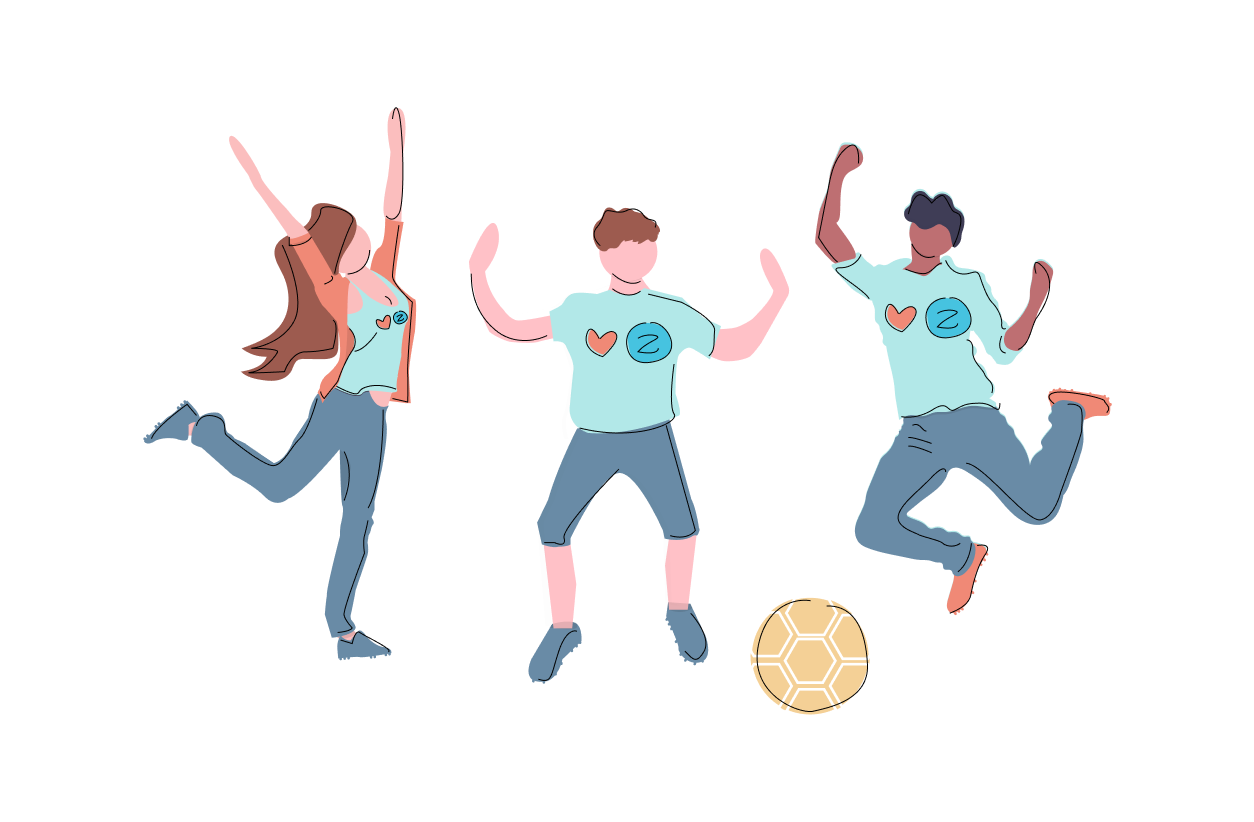
To start, there is no single, or conspicuously identifiable problem with creativity. Every person is capable of creative expression, which differs in medium, in output, in process, in experience for each individual, every time they create.
Consider creativity like a garden -- no one garden is the same as another, though they may be comprised of similar components. Each individual tends to their own garden, and seldom considers what another person’s picket-fenced backyard might be like. Again, this is not a problem.
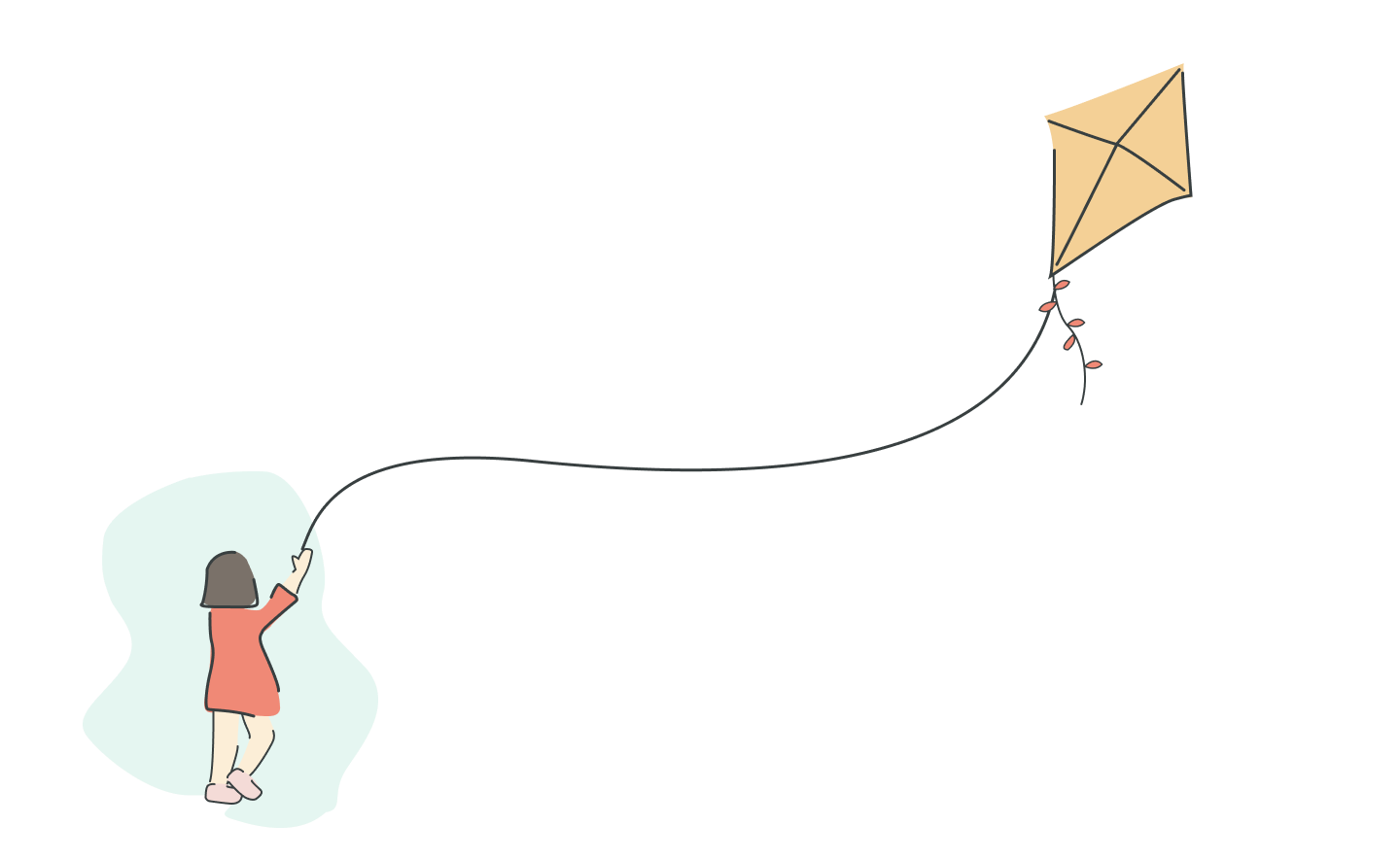

Out initial understanding of Zazzle is that it is an online marketplace that allows designers and customers to create custom designs and products. In this diagram, we mapped out Zazzle’s current ecosystem by breaking it down into sections of tools, people, and content. For this project, we focused primarily on the tools Zazzle Live and Zazzle Create, and how customers and designers utilize these tools to manipulate the content, which includes templates, guides, elements, digital photos, and others.

Throughout the semester we explored research through different avenues. Our background research, involved literature reviews and creating a competitive analysis. We also conducted secondary research by interviewing various faculty at CMU in order to tap into their knowledge within their respective fields of expertise, and gain new perspectives in analogous domains. We also practiced empathy by engaging in activities such as wine and paint to contextualize the experience that Zazzle customers may face when designing.

We proposed five domains. For each domain, we came up with questions that encouraged interviewees to answer through recollection of experiences and stories. The questions sought to provoke responses that would address the predefined research goals we had set prior to conducting the interviews.
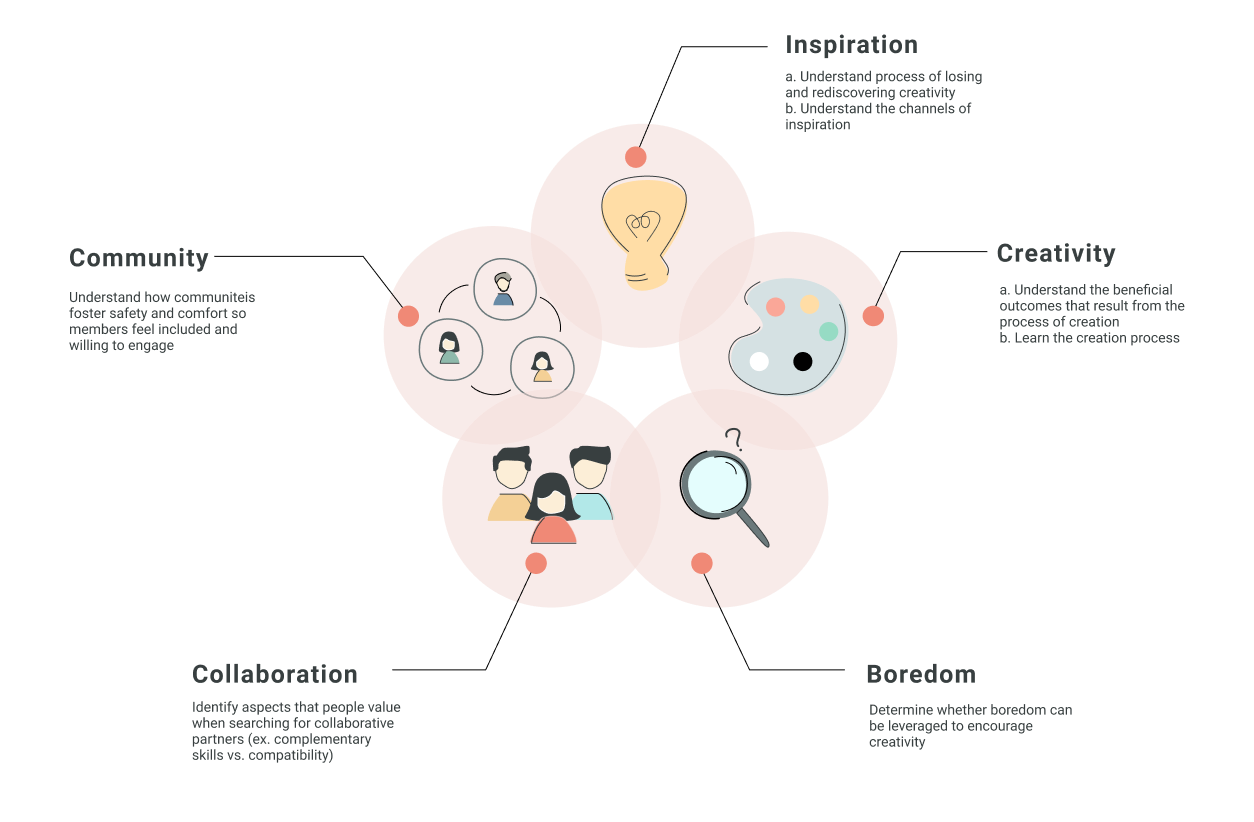

The directed storytelling interviews produced an abundance of qualitative data that was cleaned and reorganized into over 750 white notes. Those white notes were later aggregated, organized, and categorized into 7 domains: Stimulation from Novelty; Preference of Qualities in a Community; Internal Motivations; Barriers to Creativity; Safe Space; Variation in Processes; Supporting Team Dynamics. Many questions formed after the categorizing of the data points. These questions lead us to create novel remote design research methods to confirm or reject our hypotheses.
When collaborating on a gift, the emotional closeness between givers and receivers determines the receiver's satisfaction of the gift.
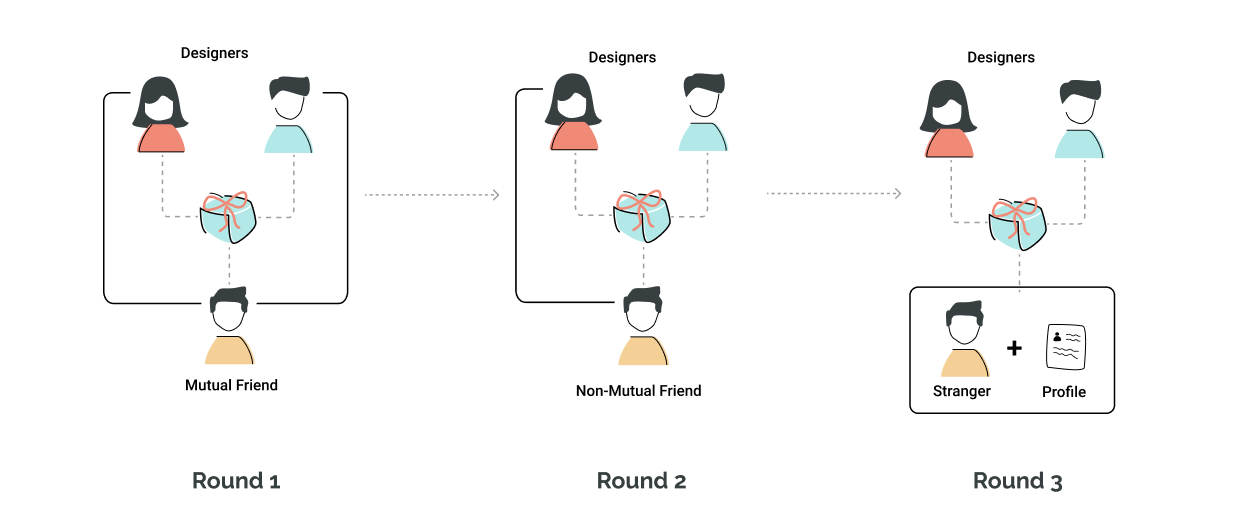

People default to sharing personal information through stories and images

People want to be consistent with how they leave their mark on designs regardless of the context or product

People refer to a "source of truth" when faced with disagreements. eg: Stranger profile, images of memories.

Something humorous on surface level allows collaborators to bond regardless of emotional tie

When the receiver is perceived as fake, people are willing to take more risks and be less critical of their work.
Strangers are able to form relationships more quickly if they share moments of laughter together
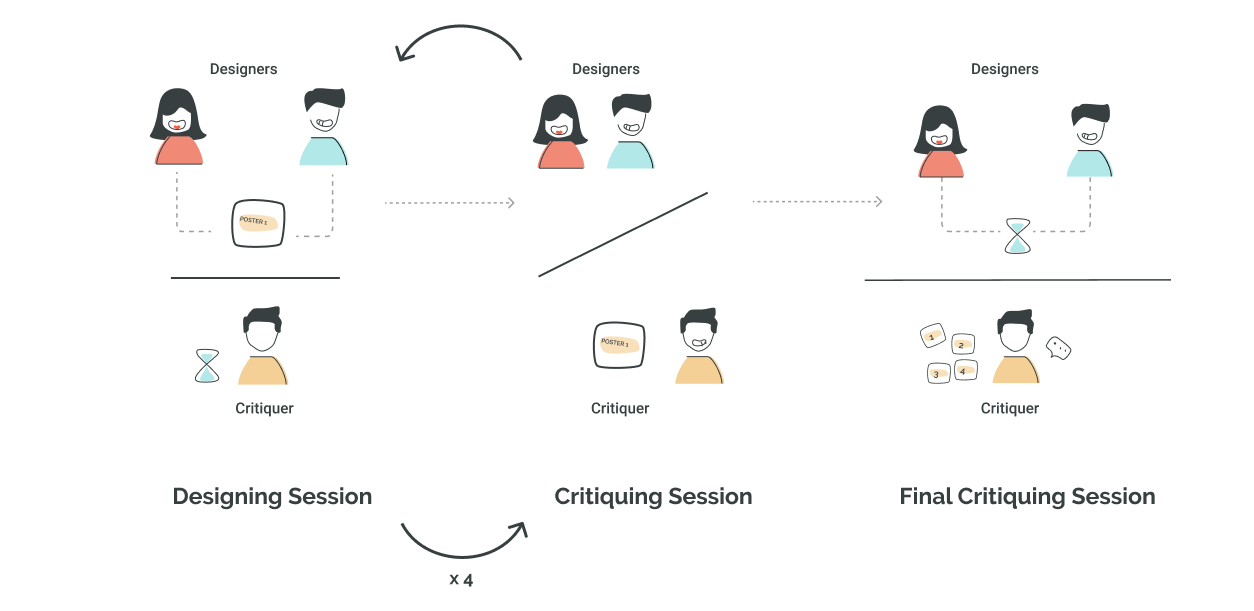

Laughter, stemming from varying situations and emotions, is effective in breaking tension between strangers

Avoiding disagreement completely is detrimental to the quality and satisfactionof the output

When collaborating, participants feel a need for validation, improving the satisfaction of the collaboration

People who did more of the work or had a larger burden, found it less rewarding to work with the other person

Avoiding disagreement completely is detrimental to the quality and satisfaction of the output
We envision a community in which users can attach personal stories to products they purchase, to reflect on the gift-receiver and event for which it was created. These stories will then be recalled to serve as inspiration for others designing a similar product.

I form emotional ties with my creation
Laughter, stemming from varying situations and emotions, is effective in breaking tension between strangers

I want to know my creations have an impact
People want to be consistent with how they leave their mark on designs regardless of the context or product

I think the cost of creativity is high

I value other people for their knowledge
Observed friction points in collaboration involve: the desire people have to receive validation from collaborators, a comfortable means to ask for help, and a way to reduce friction to communicate more openly. All of the friction points that you observed in the video are not detrimental to the collaboration, but they do have similarities that rely on the foundation of a safe space.

I want to be acknowledged in a group
When collaborating, participants feel a need for validation, improving the satisfaction of the collaboration

People like to give help but not ask for help

I'm flexible to accommodate people
Avoiding disagreement completely is detrimental to the quality and satisfaction of the output
Laughter, stemming from varying situations and emotions, is effective in breaking tension between strangers
We envision a future where Zazzle can serve as the go-to space for both the subcommunity and individuals within a subcommunity to form a unique identity. Leveraging the passion from pre-existing communities and providing a space for them to easily coordinate, we can allow people to access the tools to create the content they want.

I join a community for shared interests

I take actions on things I care about

I want to be acknowledged in a group

There is a need to belong within a community while still maintaining individuality

I want to know my creations have an impact
People want to be consistent with how they leave their mark on designs regardless of the context or product

I can accomplish more with others
